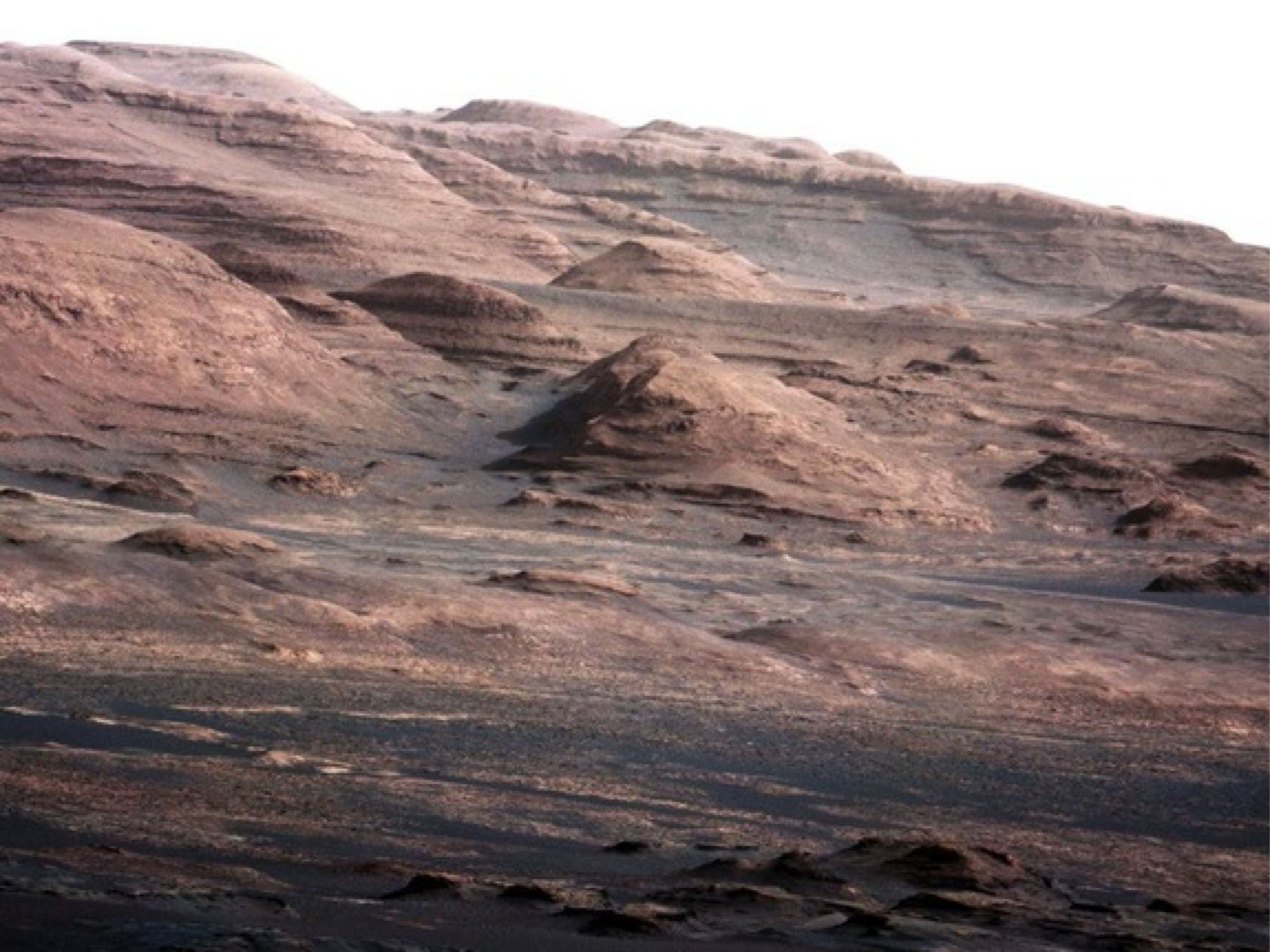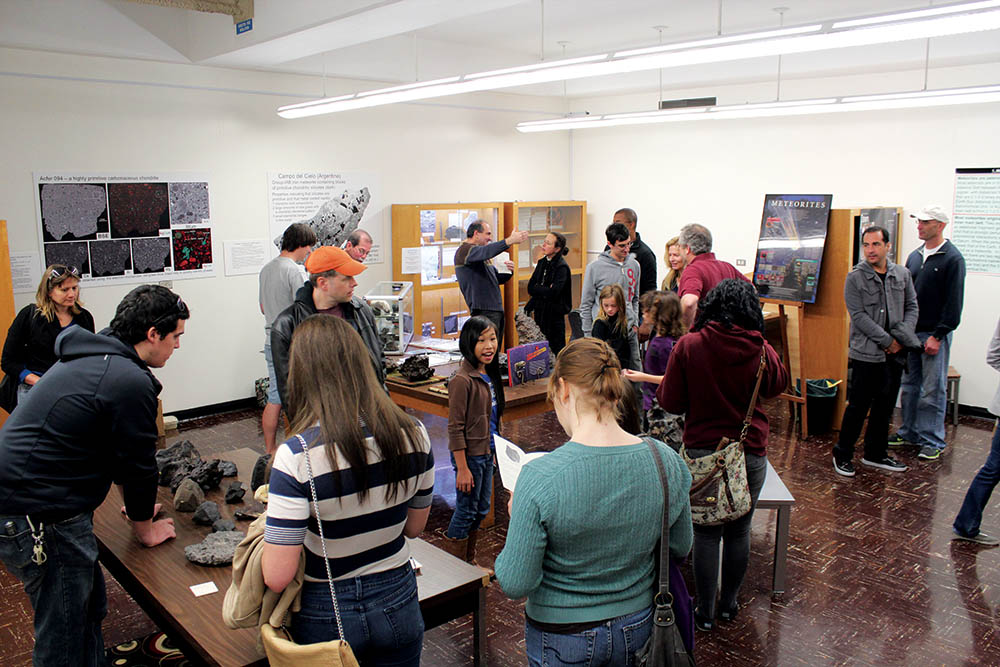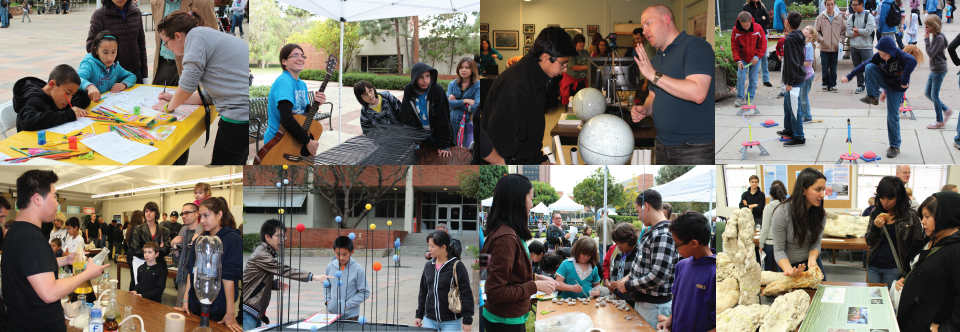 Sebastiano Padovan, a graduate student in UCLA’s Department of Earth and Space Sciences working with Professor Jean-Luc Margot has been awarded a Chateaubriand Graduate Exchange Fellowship. The award will allow him to spend 9 months at the Institut de Physique du Globe de Paris (IPGP) to continue his investigation of the interior of Mercury. He will start in January and will be hosted by Mark Wieczorek who is the Group Director for Planetary and Space Sciences at IPGP and a member of the GRAIL, InSight, and BepiColombo teams.
Sebastiano Padovan, a graduate student in UCLA’s Department of Earth and Space Sciences working with Professor Jean-Luc Margot has been awarded a Chateaubriand Graduate Exchange Fellowship. The award will allow him to spend 9 months at the Institut de Physique du Globe de Paris (IPGP) to continue his investigation of the interior of Mercury. He will start in January and will be hosted by Mark Wieczorek who is the Group Director for Planetary and Space Sciences at IPGP and a member of the GRAIL, InSight, and BepiColombo teams.
UCLA Alum Ashwin Vasavada answers questions about his work with the Mars Science Laboratory
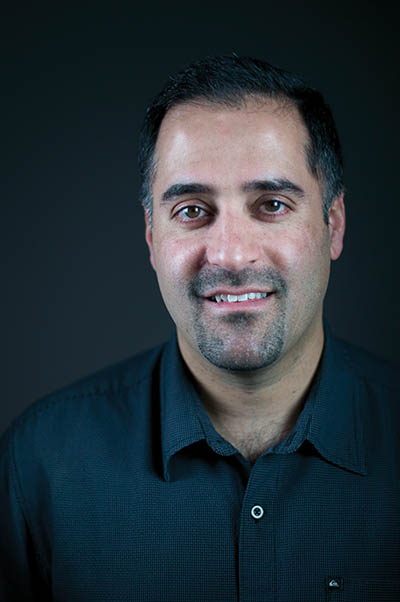 As Deputy Project Scientist of NASA’s Mars Science Laboratory, Ashwin Vasavada works with other mission scientists at the Jet Propulsion Laboratory in Pasadena, CA to decide where the Curiosity rover will next travel on Mars. Vasavada, who received a B.S. in Geophysics and Space Physics from UCLA in 1992, describes what it is like to command a rover on Mars and gives advice to aspiring planetary scientists.
As Deputy Project Scientist of NASA’s Mars Science Laboratory, Ashwin Vasavada works with other mission scientists at the Jet Propulsion Laboratory in Pasadena, CA to decide where the Curiosity rover will next travel on Mars. Vasavada, who received a B.S. in Geophysics and Space Physics from UCLA in 1992, describes what it is like to command a rover on Mars and gives advice to aspiring planetary scientists.
What inspired you to study planetary science and Mars in particular?
The late 1970s and early 1980s are sometimes referred to as the Golden Age of planetary exploration. NASA landed its first spacecraft on Mars, and the twin Voyagers began a ‘grand tour’ of the outer solar system. I remember being fascinated as a young kid by the pictures from these missions, especially those taken from the surface of Mars, as if one were standing right there and looking out at eye level. It was amazing to me that there were entire other worlds out there, exotic, but yet familiar, with rocks and soil and sky. Even though I grew up with the space shuttle, I never wanted to be an astronaut. It was these robotic probes that really took my imagination.
What has been the most exciting part of working on the MSL mission?
After ten years working on MSL, I’ve had practically every emotion. There’s a deep satisfaction in working with a group of talented people who are at the top of their game. JPL has the best engineers around, and they give it their all to help us scientists conduct our experiments on other planets. In 2008, we had to make the difficult decision to delay our launch by two years. The complexity of the rover was proving too challenging for our schedule, and Mars only comes around every two years for a launch. That was tough, but fortunately NASA stuck with it. Given all the great media coverage, you might think I would say that the landing was the most exciting. But actually, the moment I will never forget is the launch of Curiosity from Cape Canaveral. Only then, staring at this massive rocket and hearing it thunder to the sky, did I fully grasp that we little humans were hurling a one-ton emissary to another planet. And my family and close friends were there with me, watching along.
What is your favorite image returned by Curiosity so far?
Probably my favorite images are the distant panoramas of Mt. Sharp, the 3-mile-high mountain that is the main scientific target for Curiosity. It’s a gorgeous mountain, with canyons carved into its slopes by wind and water. The foothills form layered buttes, like the badlands in the Dakotas. You can follow ancient stream beds uphill until they wind around some corner between sheer walls. If we’re fortunate, we’ll be there in a year or so, dwarfed by those hills.
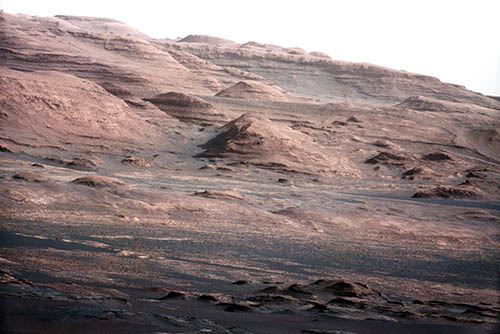
What was your best experience at UCLA?
Attending UCLA couldn’t have worked out better for me. Like many students, I wasn’t exactly sure where I was headed when I arrived. I chose UCLA because, of the schools that gave me admission, it alone excelled in both the sciences and the arts. I was seriously contemplating a career in music back then, and UCLA gave me the chance to continue to perform alongside music majors while studying science. Grad school at Caltech was five years locked in a laboratory, so I’m so grateful that at UCLA I had the classic college experience–weeknights studying hard, then playing in the marching band at the Rose Bowl on Saturday!
What advice would you give to aspiring planetary scientists?
Probably my favorite piece of advice is to not let the ‘planetary’ distract from the ‘scientist’. Many young scientists want to immediately join the current, big mission, almost like running away to the circus. And like the circus, it’s exciting, but somewhat career-limiting! My advice would be to find a research topic you love, maybe even in Earth science, since that’s often where the state of the art resides. Dive into it for graduate school and a few postdocs, and let NASA come knocking on your door to ask you to join the next mission, because you’re now the expert. Stay focused on being the best scientist you can be.
UCLA Meteorite Museum displays extensive collection to the public for the first time
Nearly 50,000 years ago, an asteroid fragment slammed into Earth approximately forty miles east of what is now Flagstaff, Arizona. Upon impact, the celestial projectile shattered into thousands of pieces and created a mile-wide hole now known as Meteor Crater. A 357-pound chunk of that original asteroid now stands center stage in the new UCLA Meteorite Museum.
The Canyon Diablo meteorite was donated to UCLA by philanthropist William Andrews Clark, Jr. upon his death in 1934, becoming one of the first specimens entered into the UCLA Meteorite Collection. While originating from sporadic donations and purchases, it has been Professor John Wasson and researcher Alan Rubin who have spent decades building the collection to its 1500-specimen count today. Together, they have made the collection one of the most extensive in the world, but only recently have these unique bits of our solar system’s history been on display for visitors to admire. “For many years, we’ve collected beautiful exhibit specimens, but kept them locked in an inaccessible cabinet,” Rubin said. “It’s nice to put them on display for other people to see.”
Those expecting the museum to be filled with rows of indistinguishable black rocks may be surprised to learn that there are many types of meteorites, ranging from metallic to stony and everything in between. More than one exhibit emphasizes chondrites, a type of meteorite that is a subject of “endless fascination,” according to Rubin. “Chondrites are composed of thousands or millions of tiny spherules, called chondrules.” While each chondrule tells a different story, they are still very much a mystery. “It appears that chondrules formed from clumps of dust in the solar nebula, the gas and dust cloud that was here before the planets and asteroids formed, and were zapped in a way that is still unknown,” Wasson said.
Not all the exhibits display rocks of extraterrestrial origin, however. One exhibit showcases a collection of melted tektites and Libyan desert glass that formed as a result of meteor impacts. Another exhibit offers tips on how to correctly identify meteorites. Rubin, a world expert in meteorite identification, receives phone calls nearly every day from meteorite-hunting hopefuls. While real specimens occasionally come across his desk, the vast majority of these objects come from Earth. The exhibit, entitled “Meteorwrongs,” features some of the more interesting Earthly samples Rubin has accumulated over the years.
Wasson and Rubin hope that the museum will help educate the next-generation of meteorite researchers. “The museum will be a wonderful teaching resource,” Wasson said. “Our goal is to make it the world’s best scientifically-oriented meteorite museum.” Open to the public weekdays from 9am – 4pm, the museum is located in Geology 3697. Admission is free. The museum, still incomplete, will have mounted informational tablets in its final configuration.
The UCLA Meteorite Museum is supported by the Department of Earth and Space Sciences and the Institute for Planets and Exoplanets. Those interested in providing financial support to the UCLA Meteorite Collection should visit http://giving.ucla.edu/meteorites/.
Watch a video profile of Alan Rubin here. Watch a video tour of the meteorite museum here.
Top scientists debate whether life could survive on Mars
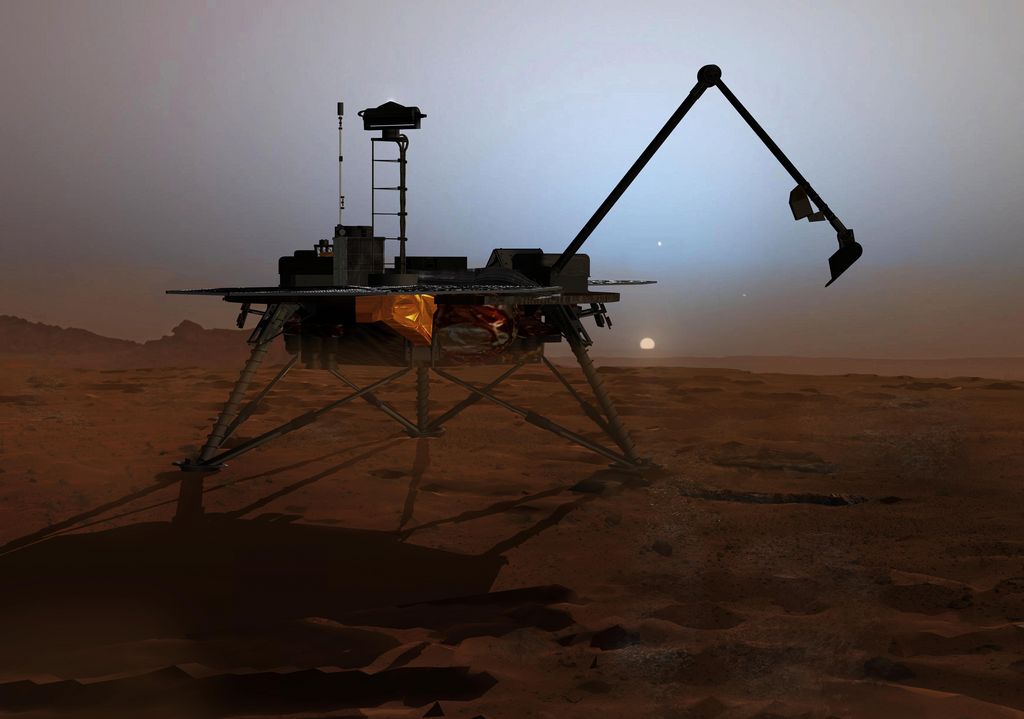
More than 50 of the world’s top Mars scientists gathered in Royce Hall last week to discuss whether life could survive on the red planet. Three dozen talks over two days covered topics ranging widely from the current liquid water activity on Mars to NASA’s planetary protection policies.
“The habitability of Mars is a pressing issue because we plan to send humans there in the next century,” said David Paige, a UCLA professor of Earth and space sciences and a co-organizer of the conference, held Feb. 4-5. “To do that in a responsible way, we should take into account that there could be an indigenous biosphere on Mars, and do our best to predict what would happen to any terrestrial organisms we might bring with us.”
Life is almost everywhere we look on Earth, but that’s not true for inhospitable Mars. Andrew Schuerger, an astrobiologist from the University of Florida and speaker at the conference, went so far as to list 17 separate environmental hazards that could freeze, irradiate or otherwise disrupt microbial life on the surface of Mars. Topping the list: powerful, microbe-frying, ultraviolet light from the sun; sub-zero temperatures; and a thin, oxygen-less atmosphere with pressure levels 100 times lower than those found on Earth.
Nonetheless, Schuerger and his colleagues have made it their mission to find the hardiest bacteria surviving in the harshest environments on Earth and to determine whether the tiny microorganisms could grow in Mars-like conditions. His search was rewarded with the discovery of several hypobarophiles, microorganisms that can grow in extremely low-pressure and low-temperature environments. While some of these single-celled survivors hail from the Canadian Arctic or the depths of Siberia, others live closer to home: Schuerger was particularly surprised to find hypobarophiles in a sample he took of human saliva.
Yet even the sturdiest of the hypobarophiles would shrivel without a stable source of liquid water, said Schuerger. While liquid water may be hard to come by on the Martian surface, there is plenty of evidence that water exists beneath the surface, according to Alfred McEwen, a planetary geologist from the University of Arizona.
First discovered from images taken by the Mars Reconnaissance Orbiter in 2011, Recurring Slope Lineae (RSL) are dark streaks that slowly creep down sun-facing crater rims and canyon walls during the Martian spring and summer and then fade in winter. The flow of liquid water, mixed with Martian salts several centimeters beneath the planet’s surface, may be responsible for tracing the finger-like patterns, though the source of the water is still unknown.
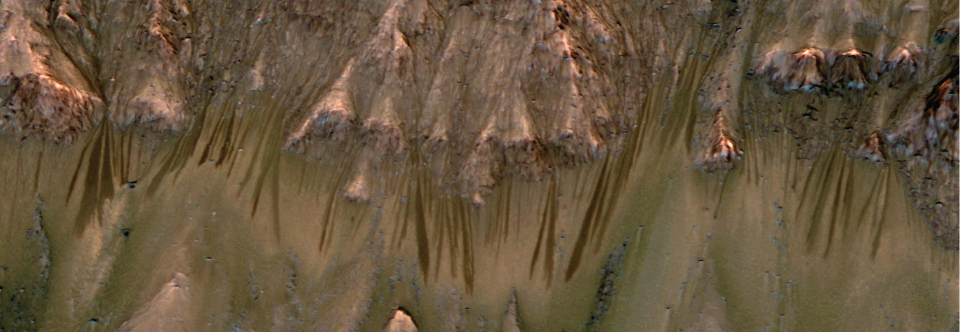
“The exact mechanism is not well understood,” said McEwen. “Given the seasonality and temperature dependence, we think a volatile must be involved, and briny water is the best candidate.”
While the formation of RSL may look remarkably like streaming water on Earth, McEwen is quick to put aside the notion, emphasizing that, on Mars, the trickle of briny water takes weeks to flow downhill and behaves more like “maple syrup slowly oozing down the slope.”
While liquid water on Mars may be subsurface and salty, one of the largest questions the conference dealt with was the role of perchlorate, a high-energy molecule toxic to most kinds of life.
In 1976, twin Viking spacecraft landed on the surface of Mars and analyzed the composition of Martian soil for signs of past or present life. Viking found only a single organic molecule, which the science team dismissed as a remnant of cleaning products used on Earth prior to launch. However, in 2008, an experiment onboard the Phoenix lander surprised scientists when it indicated the presence of perchlorate.
“Perchlorate is a double-edged sword,” said Paige. “It is a reactive molecule that destroys organic molecules, yet we find a variety of organisms on Earth that, in fact, use it to survive.”
If perchlorate, a common component in pyrotechnics and rocket fuel, was present in those early Viking samples, it may have completely destroyed any interesting organics the experiment was meant to measure. A reanalysis of the Viking results published more than 30 years later revealed that the single organic molecule the experiment detected was not the result of Earth-based contaminants as originally suspected, but instead the predicted byproduct of a perchlorate reaction.
“This could be a very exciting explanation for the Viking results that showed no organic molecules except one that could easily be residue from the combustion of perchlorate and organics,” said Paige. “This opens up a whole new set of possibilities that just weren’t there before the perchlorate molecule was discovered on Mars.”
Strong among these possibilities is the fact that perchlorates can draw atmospheric water vapor into liquid form. Liquid water produced in such a way on Mars could potentially provide hydration for microbes capable of surviving in the presence of the reactive perchlorate molecules. Just as important, when perchlorate mixes with water on Mars, it forms salty brine that freezes at a much lower temperature than pure water, which extends the range of potentially habitable conditions on Mars.
Solving the puzzle of whether life could survive in the harsh and varied environments of Mars requires a community of scientists from across many disciplines, said Paige.
“Many different types of scientists are involved, from researchers who study orbital images to biologists who grow microorganisms in petri dishes, and everyone in between,” he said. “To get such a diverse community together was a lot of fun.”
The conference, sponsored by the UCLA Institute for Planets and Exoplanets (iPLEX), the NASA Astrobiology Institute and the UK Centre for Astrobiology, is the first iPLEX meeting to be open for virtual participation. Nearly 50 participants watched the conference online, asking speakers questions via webchat. Nine talks were given remotely by speakers located as far away as the United Kingdom, Hungary and Russia.
iPLEX aims to advance research into planetary systems around the sun and other stars by facilitating interdepartmental collaboration. It is a joint venture bridging the interests of researchers in the departments of Earth and Space Sciences, Physics and Astronomy, and Atmospheric and Oceanic Sciences.
All conference talks were recorded and archived online; they can be streamed for free by the public from the conference website.
November 10, 2012: Explore Your Universe!
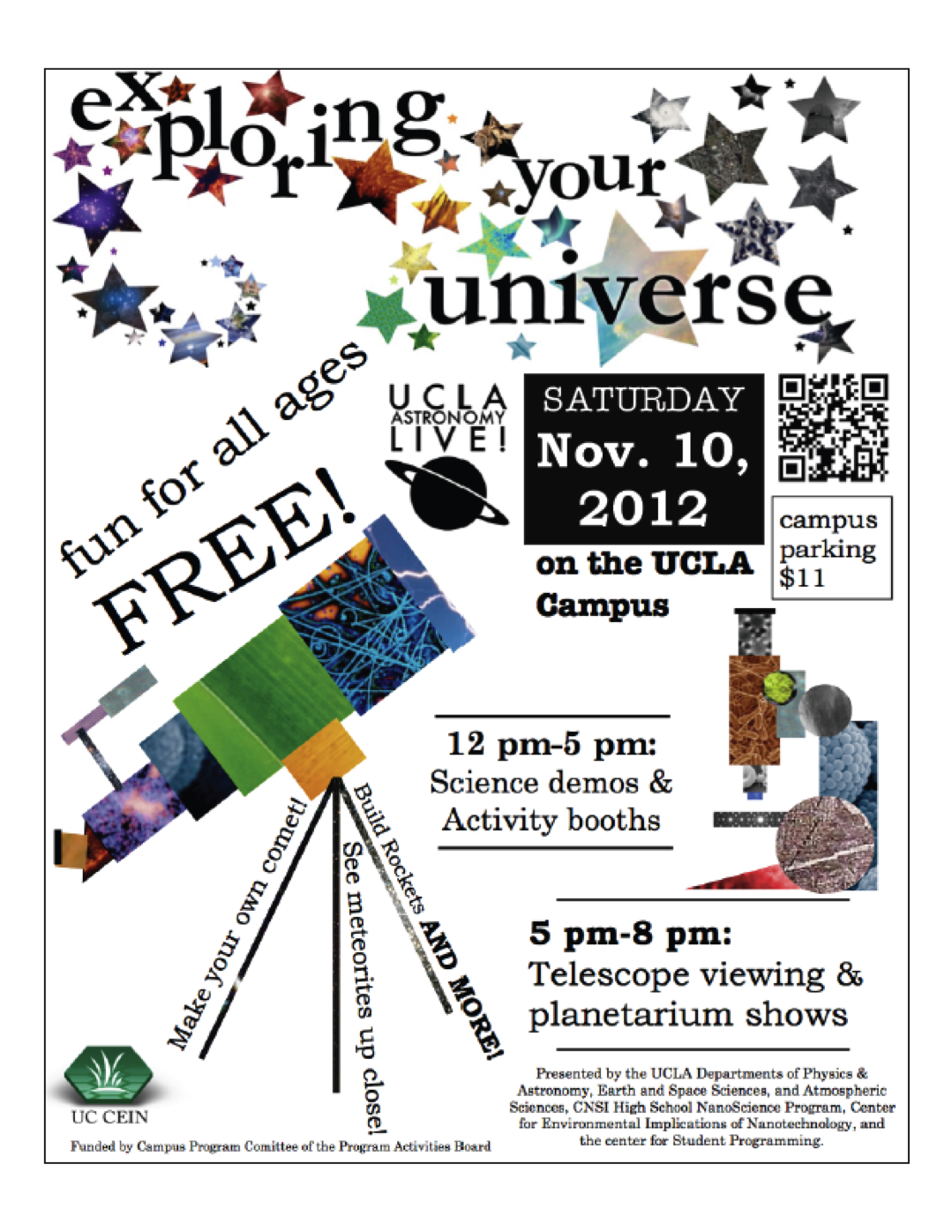 Explore Your Universe 2012 will take place on Saturday, November 10, 2012 from 12:00 pm to 8:00 pm at UCLA’s campus. This event is FREE of charge to the public and family-friendly! We will feature many activities and demonstrations open to the general public (including students), and we plan to have more than last year! Activities for all ages include workshops, faculty and graduate student talks, planetarium shows, solar telescope viewing, comet making, weather tours, dinosaur fossils, physics demos and much more!
Explore Your Universe 2012 will take place on Saturday, November 10, 2012 from 12:00 pm to 8:00 pm at UCLA’s campus. This event is FREE of charge to the public and family-friendly! We will feature many activities and demonstrations open to the general public (including students), and we plan to have more than last year! Activities for all ages include workshops, faculty and graduate student talks, planetarium shows, solar telescope viewing, comet making, weather tours, dinosaur fossils, physics demos and much more!
This event includes participation from the Department of Physics and Astronomy, Earth and Space Sciences, Atmospheric Sciences, the CNSI High School NanoScience Program, and the Center for Environmental Implications of Nanotechnology. It is sponsored by the Department of Physics and Astronomy, UCLA Center for Student Programming, and each of the departments listed above. This event was developed by graduate students, faculty, and staff in each of the these departments.
For more information on this year’s event including a full schedule, click here. For more general information on EYU click here. Click on the flyer for a printable PDF version.
Exploring Your Universe!
Exploring Your Universe (EYU) is a FREE public outreach event held on the UCLA campus every year in the Fall that showcases science from departments across UCLA through hundreds of fun, hands-on activities, demonstrations and experiments for all ages. With wide involvement from students, staff and faculty, EYU has quickly become the main science outreach event at the university. In addition to hands-on demonstrations and experiments, there is a lecture series, a planetarium show, a physics show, and access to rare fossils and UCLA’s world-class meteorite collection – this event truly has something fun for everyone! In 2013, more than 4500 participants flocked to UCLA’s campus to join the all-day science exhibition – come participate at this year’s event in November! For more information regarding this year’s event, scroll down.
The 2014 Exploring Your Universe outreach event will be held on November 16, 2014 on UCLA’s campus.
We recommend visitors arrive early and plan to stay for the duration of the event, as there is plenty to see. We will be giving away 500 free swag bags at the beginning of the event!
Weather permitting, the event will include nighttime activities such as telescope observing in the evening after the rest of the exhibits close. For more detailed information, visit our main EYU page: http://planets.ucla.edu/outreach/exploring-your-universe/

